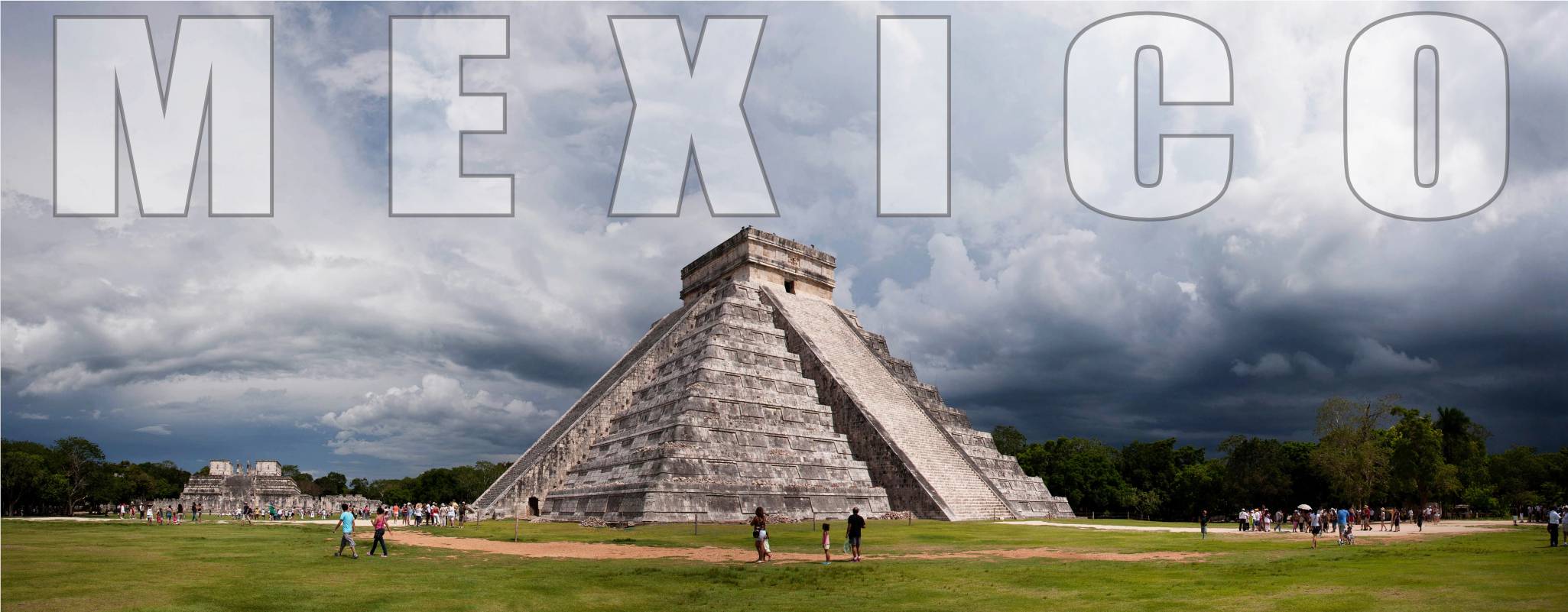


Mexco's location, climate & geography
Mexico is located in the southern part of North America, bordered by the United States to the north, Belize and Guatemala to the southeast, the Pacific Ocean to the west and south, and the Gulf of Mexico and the Caribbean Sea to the east. Covering nearly 2 million square kilometers, it is the 14th largest country in the world.
The country's geography is incredibly diverse, featuring mountains, deserts, rainforests, and extensive coastlines. The Sierra Madre mountain ranges run through the country, providing stunning landscapes and outdoor adventure opportunities. The Yucatán Peninsula is known for its flat terrain, cenotes (natural sinkholes), and rich archaeological sites.
Mexico's climate varies widely due to its large size and diverse geography. Coastal regions, including the Yucatán Peninsula and Baja California, enjoy a tropical climate with warm temperatures year-round. The central highlands, including Mexico City and Guadalajara, have a temperate climate with warm summers and mild winters. The northern regions, such as Chihuahua and Sonora, experience a desert climate with hot summers and cooler winters.
The rainy season typically runs from May to October, with the heaviest rainfall occurring in the southern regions. The dry season, from November to April, is often considered the best time for travel, particularly to coastal areas.
This varied climate allows for a range of activities year-round, from sunbathing and swimming on the beaches to exploring ancient ruins and hiking in the mountains. Mexico's geographical diversity ensures that every visitor can find something to suit their interests and preferences.
10 things to know when travelling to Mexico
1. Ancient Ruins: Mexico is home to over 30,000 archaeological sites, including famous ones like Chichen Itza, Teotihuacan, and Palenque.
2. Cuisine: Mexican food is a UNESCO Intangible Cultural Heritage, with iconic dishes like tacos, enchiladas, and guacamole.
3. Festivals: Dia de los Muertos (Day of the Dead) is celebrated nationwide with vibrant altars, parades, and festivities.
4. Tequila and Mezcal: Both traditional Mexican spirits, with tours available in regions like Jalisco and Oaxaca.
5. Biodiversity: Mexico ranks as one of the world's most biodiverse countries, with numerous national parks and biosphere reserves.
6. Colonial Cities: Cities like San Miguel de Allende and Oaxaca boast stunning colonial architecture and vibrant arts scenes.
7. Beaches: Mexico has some of the world's best beaches, including Playa del Carmen, Tulum, and Puerto Escondido.
8. Pueblos Mágicos: These "Magical Towns" are recognized for their beauty, cultural richness, and historical significance.
9. Lucha Libre: Mexican professional wrestling is a popular and entertaining sport, with matches held in major cities.
10. Language: While Spanish is the official language, many indigenous languages are spoken throughout the country.
Last update August 2024






















